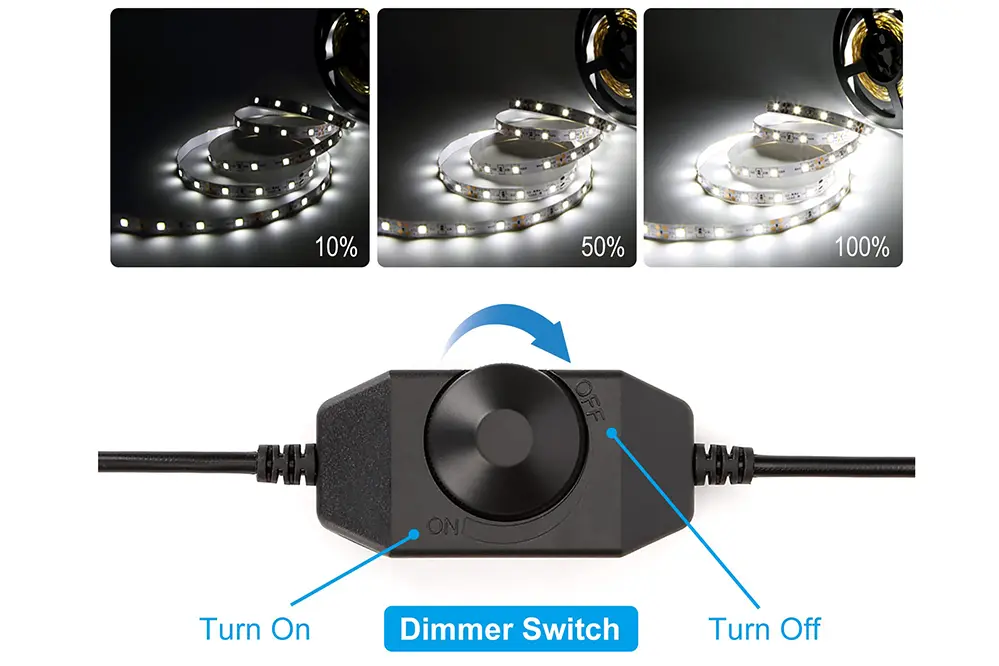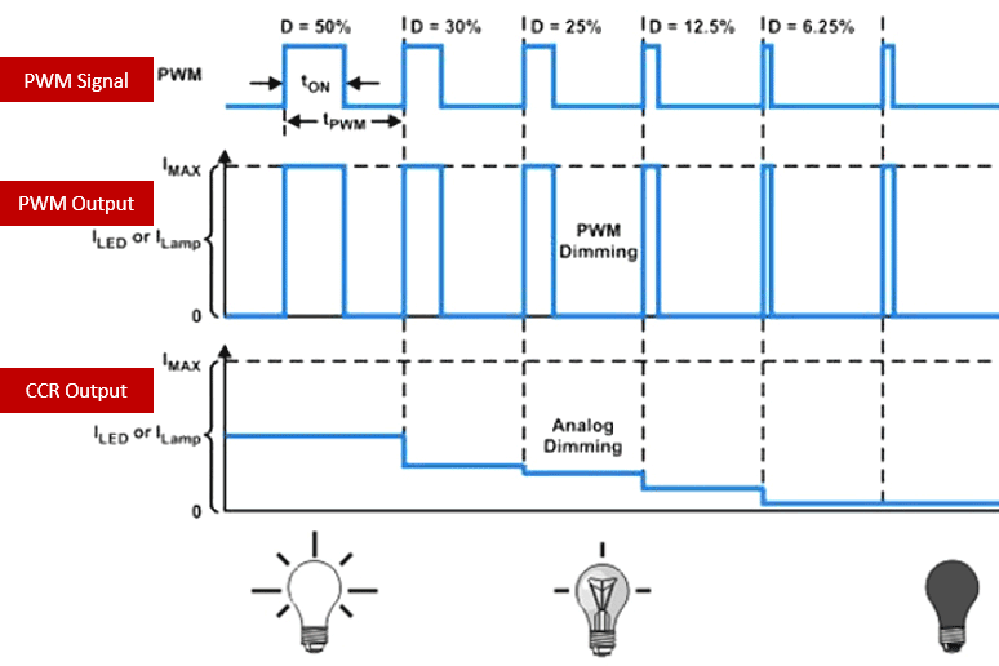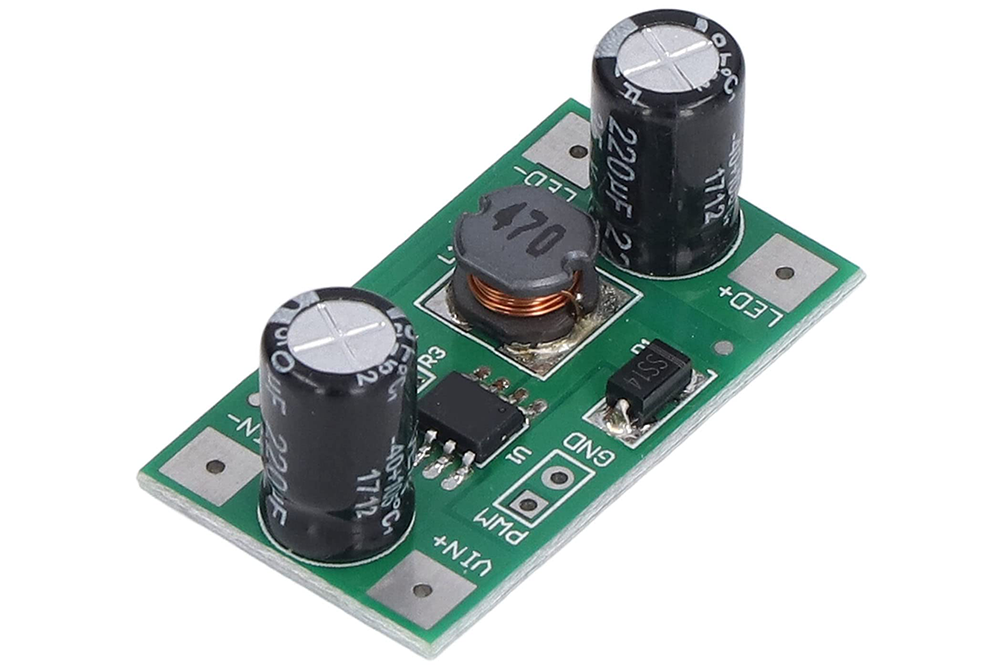Have you ever struggled with lighting that just doesn’t seem to fit the mood or task at hand? LED PWM dimming might be the solution you need. This technology offers precise control over light intensity, ensuring that your lighting environment is always perfect. LED PWM dimming is not just about convenience; it’s about creating a more efficient and adaptable lighting system.
Addressing the issue of inefficient lighting is crucial for both energy conservation and user comfort. LED PWM dimming stands out as a superior solution, offering benefits that traditional dimming methods cannot match. It reduces energy consumption, extends the lifespan of LED lights, and provides a flicker-free lighting experience.
There are various solutions available, but LED PWM dimming is unique in its ability to offer precise control and adaptability. This article will explore the different aspects of LED PWM dimming, including its benefits, applications, and future potential.
Stay tuned as we uncover the secrets of LED PWM dimming and how it can revolutionize your lighting experience. Discover why this technology is becoming an essential part of modern lighting solutions.
Introduction to LED Dimming

LED dimming represents a significant advancement in the realm of modern lighting solutions. It provides remarkable versatility in light adjustment, enhancing both energy efficiency and user experience.
With LED dimming, users can adjust lighting to match various needs.
This technology spans from simple residential applications to complex commercial environments. Its purpose extends beyond mere illumination enhancement.
Employing LED dimming solutions not only contributes to energy conservation but also supports a range of atmospheres and functionalities. By adapting to different scenarios, these solutions foster innovation, productivity, and comfort.
What is PWM Dimming?
PWM stands for Pulse Width Modulation.
PWM dimming is a method used to adjust the brightness of LED lights. This technique involves turning the LED on and off at a very high frequency, faster than the human eye can detect, creating the illusion of a steadily glowing light. Notably, this on and off switching is controlled by varying the duration of the “on” time within each cycle, which regulates the overall light output.
The speed of this switching is crucial.
While the total number of on/off cycles per second remains constant, changing the proportion of “on” to “off” time – known as the duty cycle – allows for granular control over the light’s brightness. For instance, a 50% duty cycle means the light is on for half the time and off for the other half, resulting in medium brightness.
This method provides several benefits, namely precise brightness control, energy efficiency, and extended LED lifespan. PWM dimming avoids the issues of color shift and flickering that can occur with other dimming techniques. Hence, it plays an integral role in modern, adaptable lighting systems that meet various environmental and functional demands.
Benefits of PWM Dimming for LEDs
First and foremost, PWM dimming offers exceptional control over an LED’s brightness. This precision allows for superior customization of lighting conditions, ensuring that the environment can be tailored to specific requirements with ease.
Moreover, PWM dimming is incredibly energy-efficient. By turning the LED on and off rapidly, energy consumption is significantly reduced, making it an environmentally friendly option.
This approach to dimming also helps in extending the lifespan of LEDs. The reduced heat generated through efficient energy use translates to a longer-lasting light source, mitigating the need for frequent replacements and maintenance.
Finally, PWM dimming prevents color shift and flickering, which are common issues in other dimming methodologies. This ensures consistent light quality and an optimal visual experience, making it a preferred choice for critical applications such as in medical and industrial settings where lighting accuracy is paramount. By leveraging PWM dimming, we illuminate a future ripe with efficiency, resilience, and unwavering performance.
How PWM Dimming Works

PWM dimming, or Pulse-Width Modulation dimming, signifies an innovative approach to controlling LED brightness.
At its essence, this technique involves switching the LEDs on and off at a rapid pace, imperceptible to the human eye, thereby simulating varying levels of illumination with precision.
The terms “on-duration” and “off-duration” are fundamental to understanding how the ‘dimming’ effect occurs.
Pulse Width Modulation Basics
Pulse Width Modulation (PWM) embodies an extraordinary method for managing LED brightness.
PWM for LED dimming ensures optimal light efficiency, contributing to sustainable energy practices.
Utilizing PWM, the LED’s illumination remains uninterrupted to the human eye due to rapid on-off cycles. This enables precise control over light levels.
This method’s inherent efficiency promotes longevity, reducing the frequency of LED replacements, and making it a superior choice for advanced applications.
Duty Cycle and Its Importance
The duty cycle plays a pivotal role in the effectiveness of LED PWM dimming.
A few years ago, researchers demonstrated a significant relationship between duty cycle variations and energy consumption, explaining how adjusting the duty cycle directly affected the perceived brightness and overall efficiency.
The duty cycle is defined as the ratio of the “on-time” to the total cycle time, and it determines how long the LED remains lit within a single cycle. By altering the duty cycle, you can control the brightness level accurately.
Consider an LED with a 50% duty cycle: it is on for half the time and off for the other half, resulting in a medium brightness. Increasing the duty cycle elevates the brightness, while a decrease leads to dimming, illustrating the incredible adaptability LED PWM dimming provides.
Understanding duty cycle manipulation is essential for leveraging the full potential of LED lighting systems, ensuring both precision and efficiency in various applications.
Comparing PWM Dimming with Analog Dimming
The two primary dimming methodologies for LEDs are Pulse Width Modulation (PWM) and Analog Dimming.
In PWM dimming, the LED’s light output is controlled by adjusting the duty cycle. This method operates by turning the LED on and off at a high frequency.
Conversely, analog dimming is achieved by varying the current supplied to the LED. This directly reduces the brightness by decreasing the LED’s forward current.
PWM dimming has the distinct advantage of maintaining consistent color temperature across different brightness levels, whereas analog dimming can cause color shifts.
Choosing the right dimming technique depends on specific requirements, whether the priority is maintaining color integrity or simplifying electrical components.
Applications of LED PWM Dimming

LED PWM dimming is instrumental in enhancing lighting efficiency, serving diverse applications that span various industries and domains.
For instance, in automotive lighting systems, it offers essential advantages such as superior brightness control, enhanced visibility, and energy efficiency, ensuring drivers experience optimal illumination in both dim and high-beam settings. This technology is vital for safety and provides a higher degree of customization in lighting design deployments.
Additionally, PWM dimming is crucial in sophisticated display technologies, aiding in the precise control of screen brightness. This is particularly advantageous in high-end LED displays where meticulous brightness adjustments can improve the overall viewing experience, leading to better contrast ratios and energy savings.
Architectural lighting applications also benefit significantly from LED PWM dimming. By offering refined control over lighting intensity, architects and designers can create dynamic lighting environments that adapt to different moods and activities, thus enhancing the aesthetic appeal and functional adaptability of spaces. This versatility underscores PWM dimming as an indispensable tool in modern lighting design.
Factors to Consider for Effective PWM Dimming
When implementing LED PWM dimming, understanding key parameters significantly impacts the overall performance and flicker perception.
One essential factor is the selection of the appropriate frequency for Pulse Width Modulation (PWM). Frequencies too low tend to produce visible flickering, which can cause discomfort or even health concerns for individuals.
Moreover, the relationship between “on-duration” and “off-duration” is critical to achieving the desired dimming levels.
Frequency Selection
Choosing the optimal frequency for LED PWM dimming is paramount. Higher frequencies, typically in the range of 500 Hz to 1,000 Hz, ensure a smoother operation without noticeable flicker.
Frequency selection directly influences the current waveform’s integrity.
Therefore, it’s crucial to match the frequency to the application’s specific requirements, particularly in environments sensitive to light fluctuations.
Lighting schemes designed for video recording or medical applications, for instance, often demand frequencies above 1 kHz to avoid artifacts.
Moreover, assessing the driver capabilities and the LED’s responsiveness at varying frequencies helps maintain consistent brightness.
Ultimately, the art of frequency selection is about balancing performance with precision, ensuring a comfortable and reliable lighting experience.
LED Driver Compatibility
Ensuring LED driver compatibility is crucial for optimal performance in LED PWM dimming applications.
- Voltage Matching: Verify that the driver output voltage aligns with the LED’s operating voltage.
- Current Regulation: Ensure the driver can adequately regulate current, preventing overdriving or underdriving the LEDs.
- Dimming Protocols: Check compatibility with desired dimming methods (PWM, analog, DMX).
- Thermal Management: Confirm the driver supports appropriate thermal control for sustained operation.
- Frequency Response: Assess whether the driver’s frequency response suits the LED dimming requirements without flicker.
Compatibility ensures seamless dimming and longevity of the LED system.
Choosing the right driver mitigates potential issues and optimizes light quality.
Evaluate specs carefully to guarantee performance and reliability.
Common Challenges with PWM Dimming
While LED PWM dimming offers precise control over lighting, several challenges are often encountered, and diligent attention is required to mitigate them.
Flickering is a significant concern, particularly at low dimming levels.
This issue can be exacerbated in environments with fluctuating power supplies or poor quality drivers, manifesting as a rapid, noticeable flicker that can cause discomfort, eyestrain, and even headaches for users.
Another critical challenge arises from the electromagnetic interference (EMI) generated by the rapid switch switching of PWM signals. This interference can disrupt nearby electronic devices and compromise the overall performance of the lighting system. Additionally, improper thermal management in LED systems utilizing PWM dimming can lead to thermal stress and reduce the lifespan of the components due to increased heat dissipation.
Addressing these challenges involves choosing high-quality drivers with robust EMI shielding, ensuring proper thermal management, and maintaining consistent power quality. By implementing these strategies, it is possible to harness the full potential of PWM dimming, providing users with a smooth, reliable, and pleasing lighting experience.
Tips to Optimize LED PWM Dimming
Begin with quality components.
Selecting top-tier drivers and LEDs is the bedrock of any successful dimming system. High-quality components ensure accurate and consistent dimming performance, minimizing issues such as flickering and noise. Additionally, they contribute to enhanced reliability and longevity, fostering an environment where your LED system can thrive seamlessly.
Pay attention to wiring.
Properly routed and shielded wiring can mitigate EMI.
Optimize your PWM frequency. Strive to balance between a high enough frequency to avoid visible flicker and a low enough frequency to maintain efficiency and thermal management. Generally, a frequency range of 1-4kHz works well for most applications.
Finally, invest in smart controls. Advanced control systems that can adapt to environmental changes and user preferences will maximize the benefits of your LED PWM dimming setup. Embracing technology that incorporates the latest techniques and standards will future-proof your installation, ensuring an efficient, comfortable, and sustainable lighting solution that meets the exacting demands of today’s discerning users.
Future Trends in LED Dimming Technology
The future of LED dimming technology promises exciting advancements, combining innovation, efficiency, and an enhanced user experience. As technology evolves, so too does our capacity to create more energy-efficient and customizable lighting solutions.
One significant trend is the integration of smart dimming controls.
Smart systems utilize sensors, automation, and connectivity (including IoT capabilities) to optimize dimming.
Additionally, adaptive dimming adjusts light output in real-time based on ambient conditions.
AI advancements will enable predictive dimming schedules, tailored to individuals’ habits and preferences, enhancing comfort and energy savings.
Moreover, advances in wireless dimming solutions will eliminate the need for cumbersome wiring, providing more installation flexibility and aesthetic appeal.
Anticipate the rise of hybrid dimming technologies that combine the best of both analog and digital methods. These innovations will ensure our lighting solutions are not only cutting-edge but also more sustainable and user-friendly than ever before.
Conclusion
LED PWM dimming stands as a groundbreaking innovation in the realm of lighting technology, delivering unmatched efficiency and versatility. This cutting-edge technology empowers users with precise control over their lighting environments, ensuring optimal energy consumption and enhanced comfort. From residential settings to industrial applications, LED PWM dimming shines brilliantly, meeting diverse lighting needs with unparalleled performance. Engineers and designers are increasingly leveraging its potential, recognizing its ability to transform modern illumination solutions.
As research and development continue to advance, the future of LED PWM dimming looks even more promising. The integration of smart technology with LED PWM dimming is poised to revolutionize lighting systems, making them more intuitive, energy-efficient, and user-friendly. This synergy will undoubtedly lead to innovative solutions that cater to the evolving demands of users, setting new standards in the lighting industry. With its myriad benefits and ongoing advancements, LED PWM dimming is at the forefront of the next generation of lighting technology.





